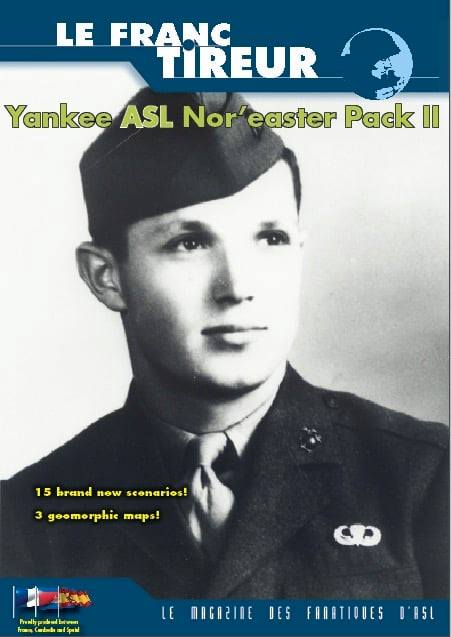Well it’s finally here. MMP has released the eRulebook. Unfortunately, we are not able to sell you this fine product but you can download it in PDF form from Wargame Vault. The cost is $59.99 plus tax. Here is the link…
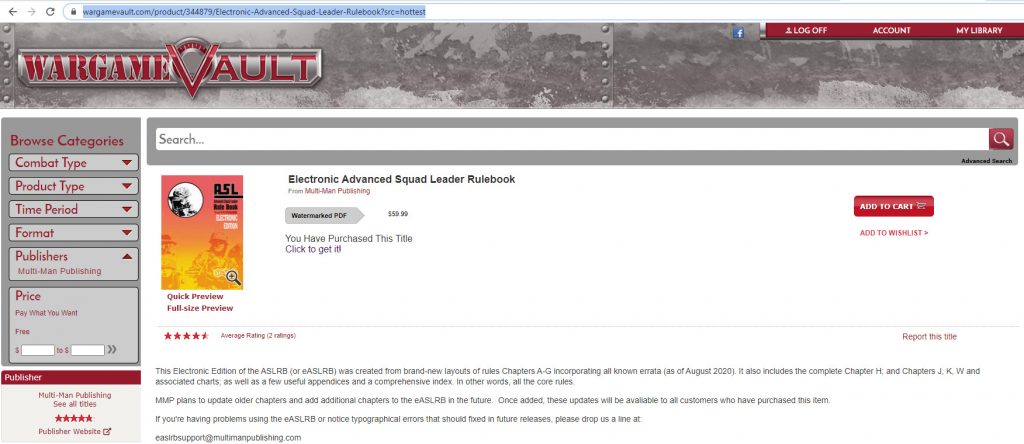
https://www.wargamevault.com/product/344879/Electronic-Advanced-Squad-Leader-Rulebook?src=hottest
First impressions:
Content: Standing at 708 pages so far, I think it is a wonderful addition to the ASL world. The hyper links make it easy to scoot around from the index, to the vehicle notes, to the rule sections, the the charts. My favorite thing about the eRulebook is that my tired old eyes can zoom in on the text. My only complaint has more to do with the search function which is not MMP’s fault but shortcomings in the reader as it sure would be nice to be able to type mist in the search bar and it bring you right to E3.32 (I remember the Jetson’s did not have this problem in the 21st century). All chapters are present including chapter H. The charts including the OBA and Overrun flowcharts are all there as well.
Price: I don’t think I would have thought twice about the $60 price tag until I compare it to the $40 for a printed version of the PRB. It may be that the PRB is more underpriced than the eRB is overpriced. At any rate, we know what we signed up for when we got into this hobby so I bought it without hesitation. Added to the value is the commitment to updates, additions, and errata without further cost. So it is a one time cost dynamic living document that should be the final word to settle rules questions.
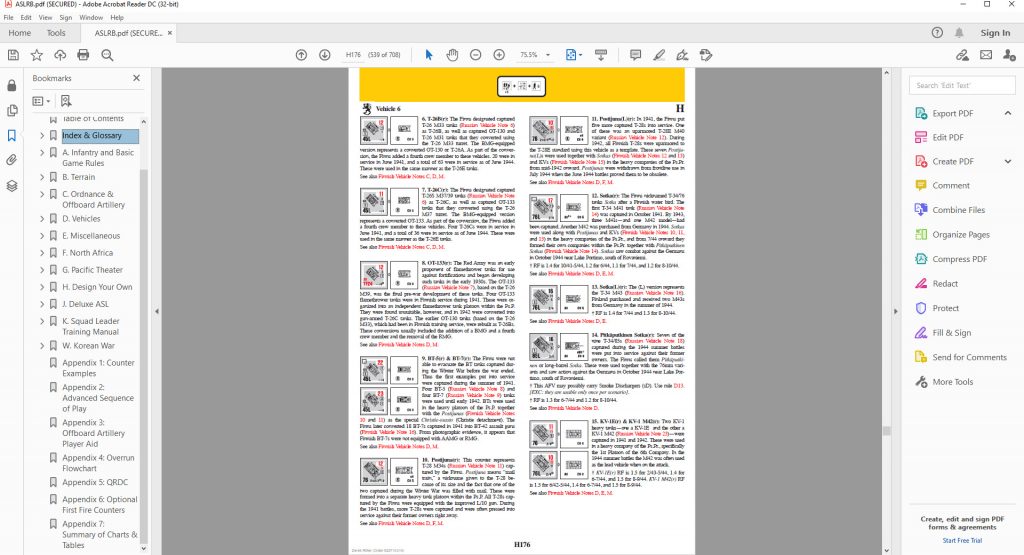
Nor’Easter Pack II -What’s In The Box:
Stock Warning: The total amount of copies being printed of this pack and these boards is a fraction of a normal print run. I guarantee this product will be sold out in no time. Please order before they are gone as the boards will be impossible to find later on (other than e(xtortian)Bay).
This looks like an incredible product from some real vetran’s (deliberate spelling mistake, tell me why 😉 ) of the hobby. First thing you notice is three really nifty looking geomorphic boards. NP1 looks to me like it is ideal for PTO and NP3 looks to me like something out of the fertile lands of Tunisia. Then there are the 15 scenarios. Although I haven’t actually had a chance to see them up close, the first thing that I notice is that eleven of the fifteen are 6 turns or less. Also, I see that the scenarios take you from the opening days of WW2 to Korea, then to Vietnam (?!?). I can’t wait to see the units involved for both the French and the Vietnamese.
Board NP1 :
Board NP2 :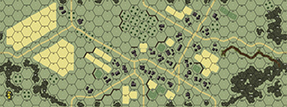
Board NP3 :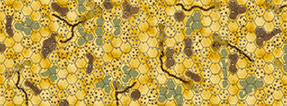
The scenarios

| YASL14 | Szczuki | vs. | 5.5 turns |
|---|
Szczuki, Poland, 4 September 1939 : The German 3rd Army, which was part of Army Group North, drove hard out of East Prussia. They were heading south towards Warsaw as part of the overall German plan to trap the Polish armies west of the Vistula River. In the path of the German advance was Army Modlin, of whom the Mazowiecka Cavalry Brigade was a part. The Polish were fighting the German advance tooth and nail.
| YASL15 | Chances are Slim | vs. | 6 turns |
|---|
40 KILOMETERS FROM THE HUNGARIAN BORDER, Poland, 27 September 1939 : The Cavalry Operational Group (Grupa Operacyjna Kawalerii) was close to the Hungarian border when Soviet forces hit them from the front and rear. Soviet tanks led the way as the Poles fought desperately to stave off the attack.
| YASL16 | Legion of Doom | vs. | 5.5turns |
|---|
Stary Sanzhary, Ukraine, 3 October 1941 : The Independent State of Croatia contributed to Hitler’s East Front crusade by loaning the 369th Rein-forced (Croatian) Infantry Regiment to the Wehrmacht. Known as the ‘Croatian Legion’, the regiment was operating in support of Army Group South in the Ukraine. On October 3rd one of the regiment’s officers, Hauptmann Vasilije Maljgin, noticed that armed men were hiding in the woods around the village of Stary Sanzhary. The 11. Radfahren-Kompanie (bicycle company) and an at-tached Reiterzug (cavalry platoon) were ordered to reconnoiter and clear out any enemy troops. The bicycle company approached the village from the west while the cavalry came from the northeast.
| YASL17 | Hill 200 – gateway to rzhev | vs. | 5.5turns |
|---|
Hill 200, Polunino, Russia, 4 August 1942 : During the summer of 1942 the Soviet military leadership considered the central (Smolensk-Moscow) axis to be the main strategic area of importance and massed their forces accordingly. From the 1st to the 3rd of August, the Russians attempted to broaden the penetration to the northwest and northeast of Rzhev. On August 4th, following an air raid and artillery fire the Soviets attacked. At 1355 hours, under cover of a moving barrage, approximately 25-30 Russian tanks and a large mass of Russian infantry rushed the positions of the German 6th Division, with the main weight of the attack falling on the 58th Infantry Regiment’s 1st and 9th Companies.
| YASL18 | Recon on the logging trail | vs. | 5 turns |
|---|
WEST OF HILL 700, Bougainville, 11 March 1943 : With the main Japanese assault by Colonel Magata’s 1st and 3rd Battalions about to hit the 37th Division’s 2nd Battalion, 129th Infantry Regiment, both sides needed to know the intentions or positions of the other before the big battle broke. Recon in force was ordered and clashes along the Logging Trail down by the lowlands near the hills erupted.
| YASL19 | Indirect Panther | vs. | 8 turns |
|---|
Ukraine, 16 February 1944 : Kampfgruppe Haack was a scratch organization of units hastily assembled to guard the left flank of VIII Armee. Urlauber Regiment Baake provided the infantry strength of the kampfgruppe. Comprised of escapees from units encircled in the Cherkassy Pocket and troops recalled from leave, hastily organized into platoons and companies, the regiment lacked heavy weapons. In addition to guarding the flank of VIII Armee, the overextended kampfgruppe was ordered to establish contact with the right flank of III Panzer Korps, which was attempting to relieve the troops trapped in the Cherkassy Pocket. Directly in Kampfgruppe Haack’s path was the Russian 325th Rifle Division, entrenched on hill 204.8.
| YASL20 | Broe Bay Brouhaha | vs. | 6 turns |
|---|
Inasi village, Noemfoor, 23 July 1944 : Douglas MacArthur coveted Noemfoor Island for the three airfields it possessed. D-Day was set for July 2, 1944 and the U.S. Army’s 158 RCT clambered ashore against little opposition. On July 3rd and 4th the 503rd Parachute Infantry Regiment’s 1st and 3rd Battal-ions were to be airdropped into the beachhead centered on Kamiri airfield. Due to the size of the drop zone as well as the condition of the airfield, the two battal-ions suffered a 9% jump casualty rate. This was bad enough, but soon the 503rd would be called upon to clear the Japanese off the southern end of Noemfoor.
| YASL21 | A Matter of Honor | vs. | 6 turns |
|---|
Orote peninsula, Guam, 26 July 1944 : Six weeks after Operation FORAGER crashed ashore on Saipan, American commanders turned their attention to the liberation of Guam. Two points on the island’s eastern shore were selected for the initial beach landings. The assault force comprised the 3rd Marine Division (3rd, 9th, and 21st Marines) reinforced by the 1st Provisional Marine Brigade (4th and 22nd Marines) and the Army’s 77th Division. On 21 July, the first waves of LVTs stormed the beaches close behind a thunderous naval barrage and bombing by swarms of U.S. Navy and Marine aircraft. The Japanese, for their part, were ready for the onslaught, and caused considerable delay to American efforts at consolidating the twin beachheads into one. By D+5 the Orote Peninsula was the last Japanese stronghold on the eastern side of the island. The 4th and 22nd Marines were ordered to attack the peninsula and seize Orote airfield, as well as the old Marine Barracks, abandoned since the Japanese invasion in December 1941.
| YASL22 | Where the Reindeer Dare Not Go | vs. | 5.5 turns |
|---|
East of Luostari, Murmansk oblast, Russia, 11 October 1944 : During the initial phase of the Petsamo-Kirkenes Offensive, the Soviet 14th Army’s objective was to rapidly advance to Petsamo and Luostari and attempt to cut off the retreat of German forces. Unfortunately there were only two roads in the sector, the ‘Russian Road’ leading to Petsamo, and the ‘Lanweg’ leading to Luostari. The terrain was mostly tundra, with hills, brush and rocky outcroppings. This really confined the main advance, and especially the armor, to the two roads. The advance along Lanweg was slow, and finally a bridgehead was established across the Titovka River. To continue the attack, the 99th Rifle Corps placed all the available armor at the disposal of the unit leading the attack, the 65th Rifle Division. The armor included KV-85 heavy tanks and ISU-152 assault guns.
| YASL23 | Bloody Christmas Hill | vs. | 5.5 turns |
|---|
Mont de Sigolsheim – hill 351, France, 26 December 1944 : During Operation Habicht (Hawk) the Germans captured Hill 351 on December 14th. It had taken them three days to take the hill from the U.S. 36 Infantry Division, and they nicknamed it ‘Bloody Hill’. Hill 351 commanded the surrounding valley, overlooking the towns of Sigolsheim, Kientaheim, Riquewihr and Bennwihr. The 15th RCT, 3rd Infantry Division was tasked with taking the towns back, but after entering Sigolsheim and taking heavy small arms, artillery and mortar fire from Hill 351, they knew the hill had to be retaken. Defending Hill 351 were 200 SS troops that were fanatic and given orders to hold to the death. The Americans launched attacks from Dec 24th to the 26th, with the last attack on the morning of Dec 26th stalled by ferocious artillery and mortar fire. The men of B Company had to dig in for cover only 150 meters from the crest line on the northwest corner of Hill 351. Then at noon Lt. Colonel Ware arrived with his S-3 and the commander of D Company and 25 men on what the Americans nicknamed Hill 351, Christmas Hill.
| YASL24 | The Flying Column | vs. | 8.5 turns |
|---|
Cabanatuan, Philippines, 1 February 1945 : Now that Douglas MacArthur had actually set foot on Luzon, he thirsted after, even more so, the glory that would accompany the recapture of Manila. The First Cavalry had come ashore on January 27, 1945 at Lingayen Gulf. MacArthur, sensing the Japanese in front of the First Cav were weak, almost immediately ordered Major General Verne Mudge to slash southward to take the capital on the fly. Mudge organized three flying columns consisting of armor, reconnaissance, engineering and self-propelled artillery, along with the dismounted troopers in an effort to indeed bounce Manila. At one minute past midnight, February 1, 1945, the flying
columns roared southward.
| YASL25 | Stein’s Stinger | vs. | 8.5 turns |
|---|
Iwo Jima, 19 February 1945 : The job of the 1st Battalion, 28th Regiment, 5th Marine Division on D-Day February 19th on Iwo Jima was to fight east to west across the southern neck of the island to isolate Mount Suribachi. The area just off the beach at the base of Mount Suribachi was a moonscape of shell craters and brush. Company A of the 1st Battalion was to have been the battalion reserve ; however it was soon called forward to assist in the attack as casualties mounted. Among the men of Company A was Tony Stein. Stein had been a toolmaker in civilian life. This now served him well, as he had fashioned a personal, hand held heavy machine gun from the wing gun of an old wrecked Navy fighter back on Hawaii. Stein called the weapon his ‘stinger’. With a network of pillboxes now blocking his Company’s path, Stein and his ‘stinger’ went to work.
| YASL26 | Whiteout | vs. | 5.5 turns |
|---|
Hoheleye, Germany, 2 April 1945 : The U.S. 9th Infantry Division advanced against the southern edge of the Ruhr Pocket in the steep wooded valleys of the Sauerland, with the 47th RCT on the left aiming towards Oberkirchen, the 39th RCT on the right driving for Winterberg and the 60th RCT in the center pushing towards Langewiese. The 60th RCT took Girkhausen with the Germans offering only light resistance, and then set its sights on the next town, Hoheleye, a sleepy little resort that featured a large hotel, the Wartburg-Winterberg. Unbeknownst to the Americans, fanatic SS troops from local school and training units were billeted in Hoheleye. To complicate the situation, a freak spring snow squall had enveloped the area, suddenly curtailing visibility.
| YASL27 | A Man Called Hog Jaw | vs. | 8.5 turns |
|---|
West of Seoul, South Korea, 24 September 1950 : The Korean War was about to take a drastic turn. On September 15, 1950, two regiments of the U.S. 1st Marine Division landed at the port of Inchon, 25 miles to the west of the capital of Seoul. The landing was a spectacular gamble by U.N. Supreme Commander Douglas MacArthur, and proved to be an equally spectacular success. The U.N. assault completely surprised the North Koreans, whose army was desperately trying to hurl all U.N. forces from Korea by eradicating the Pusan Perimeter. Inchon proved to be only lightly defended by the North Korean People’s Army (NKPA), and the U.S. Marines established a beachhead. Inchon was quickly conquered but the capital would be a much different proposition.
| YASL28 | Fool’s Errand | vs. | 5 turns |
|---|
The KON BRAI ROAD, NEAR KONTUM, FRENCH Indochina, 1 February 1954 : The troops of G.M.100 (Groupement Mobile) reflected France’s diverse force composition in Indochina. The 7th and 8th Companies of the II Korea Battalion were largely composed of Vietnamese troops from the Plain of Reeds area of French Indochina. They had formed the Bergerol Commando, named after the French commander who had formed the unit. Together with a small French cadre, they were now the 7th and 8th Companies of the II Korea, G.M.100. They had a reputation as tough jungle fighters. The Viet Minh and the Bergerol rarely showed quarter to each other. On February 1st, the 7th and 8th Companies, along with a 50-man native contingent, a platoon of armored cars and a section of engineers, were sent to clear mines from the road leading from Kontum to Kon Brai and check the status of several bridges along the route. It was a tedious and dangerous task. The French would demine a road one day, only to have the Viet Minh mine the same section after they had passed. The opening phase of this mission was to take place in relatively open terrain. However, the latter phase was going to be in more typical, claustrophobic jungle terrain.
Lone Canuck Publishing Presents:
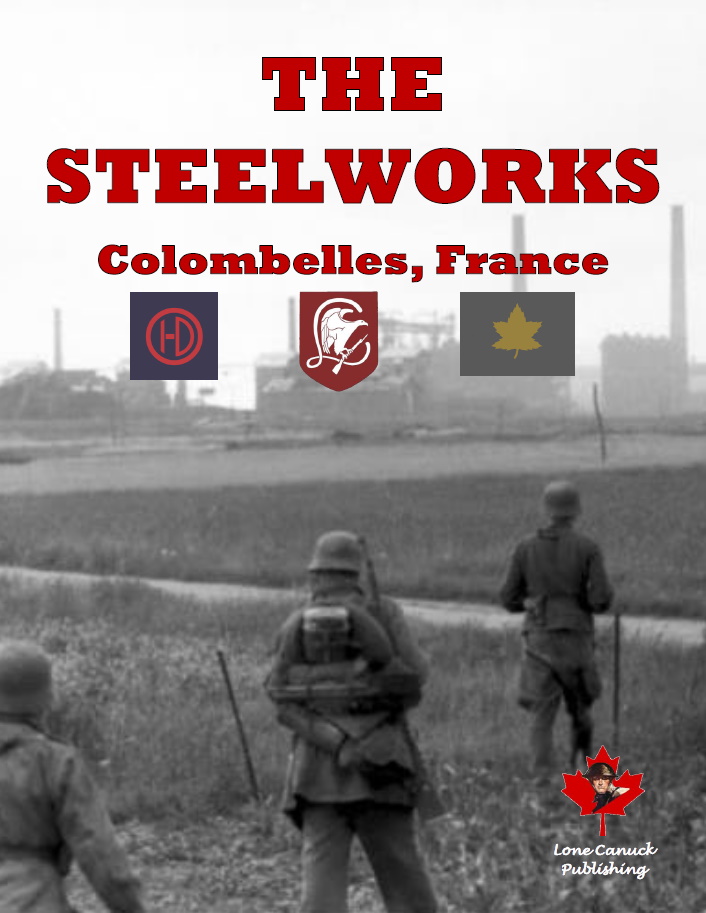
We are now taking orders for The Steelworks. We should hopefully be shipping by the end of February/beginning of March.
The Norman city of Caen and the airfield of Carpiquet were important targets on D-Day. The British and Canadian troops that landed on Sword and Juno Beaches were tasked with capturing these vital objects. The British and Canadian troops did not get that far on D-Day. Carpiquet would finally be captured on 8 July during Operation WINDSOR with Caen falling the following day during Operation CHARNWOOD. CHARNWOOD however only managed to capture of the northwestern part of Caen, the rest of the city would fall during Operation GOODWOOD on 18 July. Colombelles is an industrial town north east of Caen, east of Hérouville and the Orne River. The entire area was dominated by the chimneys of the Société Métallurgique de Normandie (Metallurgic Company of Normandy), a giant steel factory at Colombelles. The chimneys were the ideal observation posts over the battlefield for the Germans. General Bernard Law Montgomery decided on an operation to take these posts out. The operation was aptly called Operation STACK.
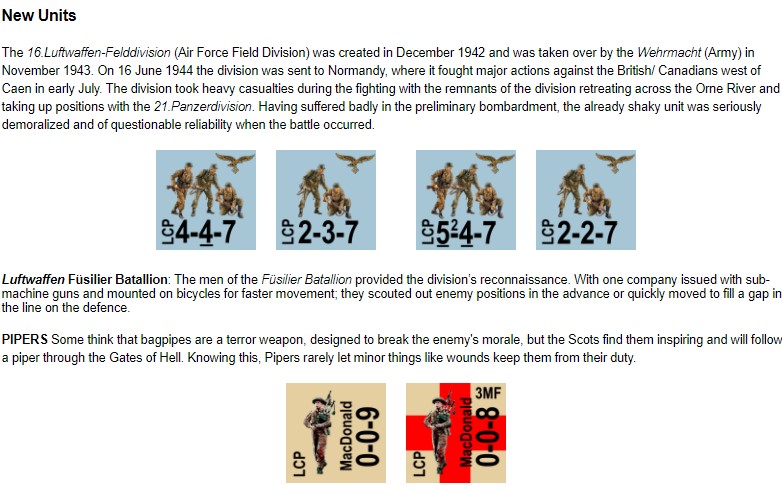
StW1 – Secure the Crossroads – East of Colombelles, France, 11 July 1944 [Night Scenario]: Game Length: 5½ Turns; British: 9½ Squads, 2x Leaders, 3x Machineguns, 2x 2″ Mortars, & PIAT; vs. Germans: 3x Squads, 3x Crews, Leader, 2x Machineguns, 75mm Anti-Tank Gun & Fortifications; Estimated Playing Time: 2 hours 28 minutes
StW2 – Clearing Colombelles– Colombelles, France, 11 July 1944: Game Length: 5 Turns; Germans: 7x Squads, 2x Leaders, 3x Machineguns, & Fortifications; vs. British: 10½ x Squads, 4x Leaders, 2x Machineguns, 2x 2″ Mortars, 2x PIAT, DC, & 2x BT; Estimated Playing Time 2 hours 34 minutes
StW3 – Tiger Attack – The Steelworks, South of Colombelles, France, 11 July 1944: Game Length: 5½ Turns; British: 7x Squads, 3x Leaders, 2x Machineguns, PIAT, 2″ Mortar & 6x Sherman Tanks; vs. Germans: 12x Squads, 4x Leaders, 2x Machineguns, 2x Psk, Rocket OBA, & 3x Pz VIE Tiger; Estimated Playing Time: 3 hours 55 minutes
StW4 – Knock them Down!– The Steelworks, South of Colombelles, France, 17 July 1944: Game Length: 11½ Turns; British: 33x Squads, 2x Gun Crews, 11x Leaders, 9x Machineguns, 6x 2″ Mortars, 6x PIAT, 11x Sherman Tanks, 2x Anti-Tank Guns, & 2x Carriers; vs. Germans: 12x Squads, 12x Crews, 4x Leaders, 6x Machineguns, 2x Psk, 2x Pz IV, 3x Pz VI Tigers, 4x 81mm Mortars, 5x, Guns, Fortifications, & OBA; Estimated Playing Time: 16 hours 6 minutes
StW5 – Securing the Steelworks– The Steelworks, Colombelles, France, 17 July 1944: Game Length: 10 Turns; Canadians: 30x Squads, 7x Leaders, 11x Machineguns, 4x PIAT, 6x 2″ Mortars, 2x DC, & 2x BT; vs. Germans: 16x Squads, 9x Crews, 4x Leaders, 10x Machineguns, 5x Guns, & Fortifications; Estimated Playing Time: 10 hours 21 minutes
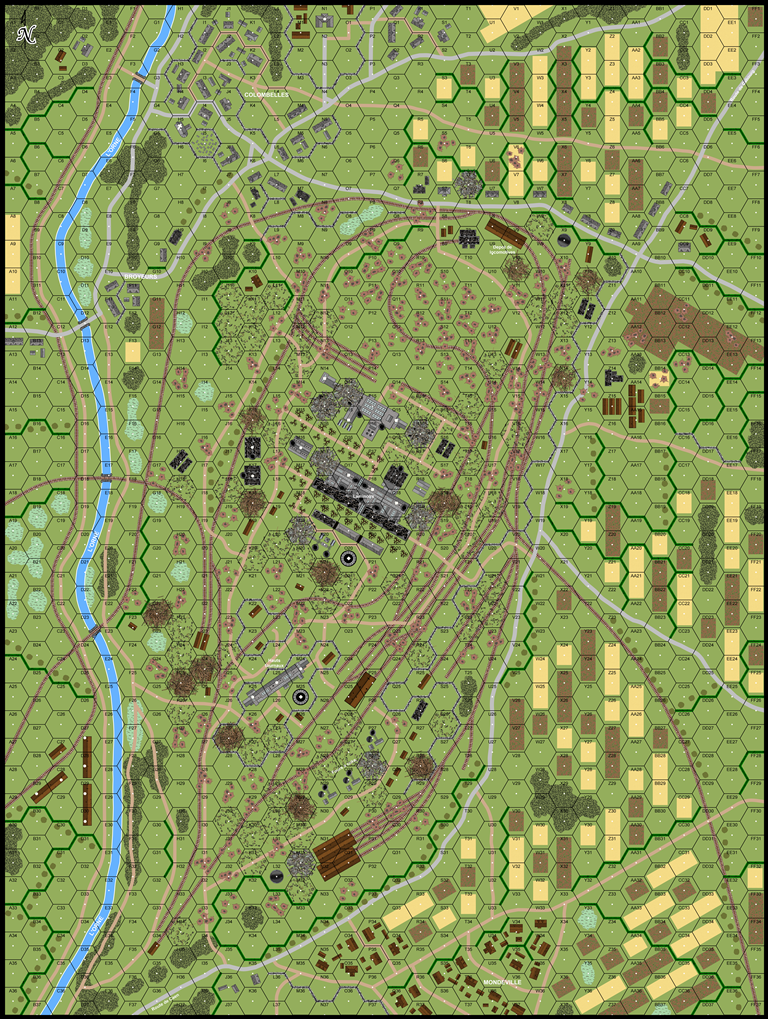
Contest #96
It is the DFPh in the final Player Turn (US) and the American is 4 CVP short for the win. He has moved two Bazooka HS and a M4A376(W) in for the kill. What do you do as the German player to ensure the greatest chance for victory? Note that the M4A3 has not depleted it’s APCR (A5). It may be easier to visualize your options if you pull out your Hatten map.
Please send your solution to email address dritter519@gmail.com. One random winner from correct entries will be selected for a $10 gift certificate.
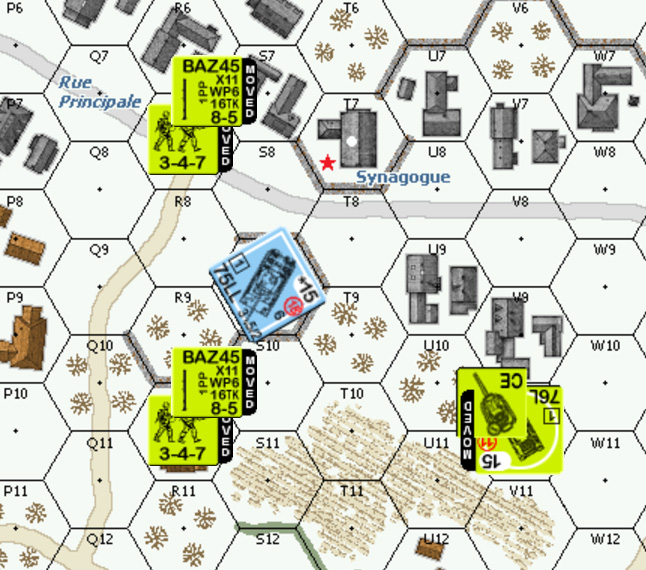
Solution To Contest 95
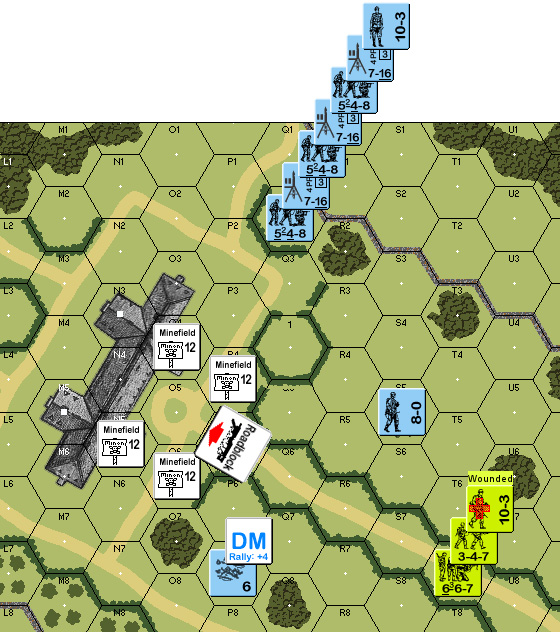
Well the Americans are pretty much screwed. The chance for one of them to survive a 36 down 3 attack followed by a 16 down 3 attack SFF (the Amis have to spend 2 MF to cross the roadblockto get into O5 so they can get attacked twice) is less that 0.25% according to the article in ASL Classic. So what can we do to improve our odds dramatically? Here is my plan…
1.Rally Phase: Deploy 667 Squad.
2. MPh: Move the 3 HS (or Squad and HS if they failed to Deploy) to P5.
3. RtPh: Voluntarily Break the units one at a time (Do not Rout together as they will take one combined interdiction roll and this is bad) in P5 and Rout toward N4. Each will have to take an interdiction roll in O5 and if, and it’s a big if, one of them rolls snake eyes (2.8%) for HOB, and they roll an 8 or less on the HOB roll (72.2%) they will end their Rout Phase in O5 in Good order and able to Advance into N4 for the Win!
So the chance of pulling it off is 2.02% per unit. So if the Squad manages to deploy, you have about a 6% chance of winning the game (97.98% Cubed = 94% chance of failure). If the Squad failed to deploy you have about a 4% chance of pulling it off (97.98% Squared = 96% chance of failure) Which is still easier than getting a CH. Both are exponentially better odds than trying to rush the building.
Almost Gone (Out of Print items that are running low on stock):
LFT – Kampfgruppe Sheer Player’s Guide
* Less than 10 copies left. This may truly be your last chance to aquire these products.
Again, please subscribe to this page so you too can impress the ladies with your up-to date knowledge of all things ASL.

